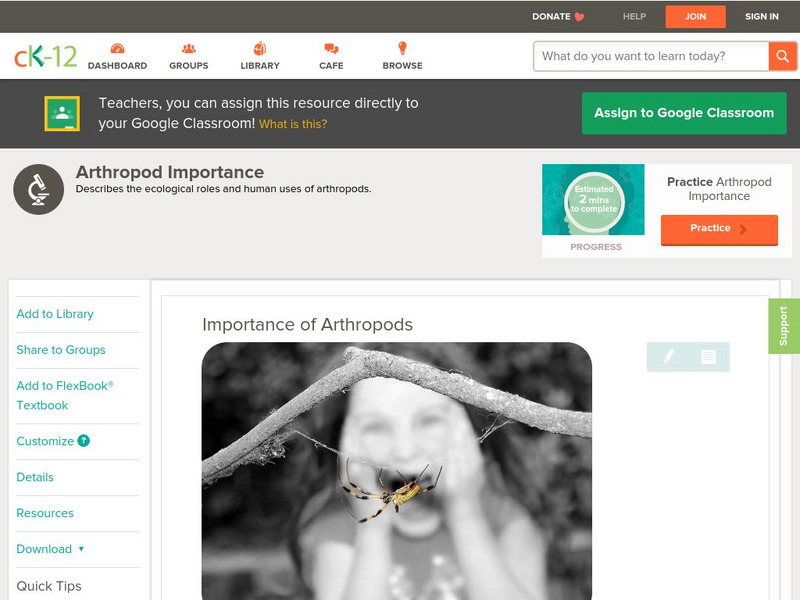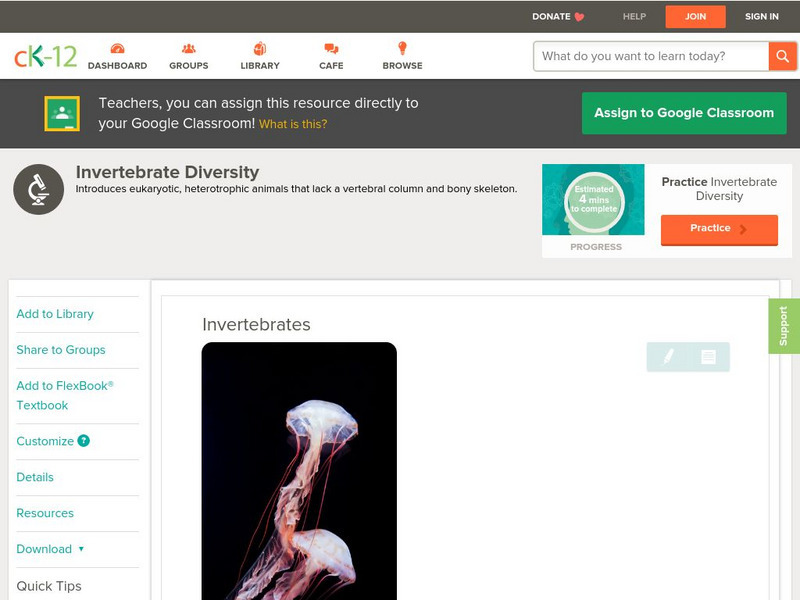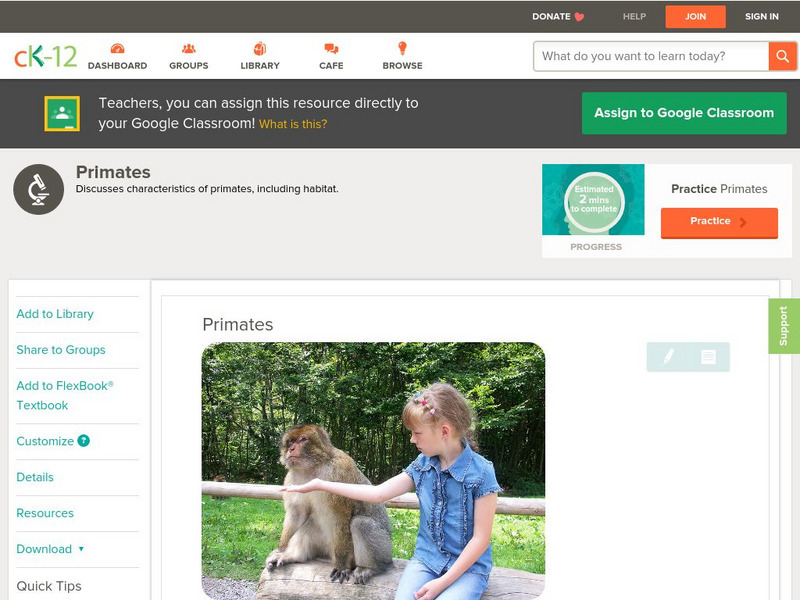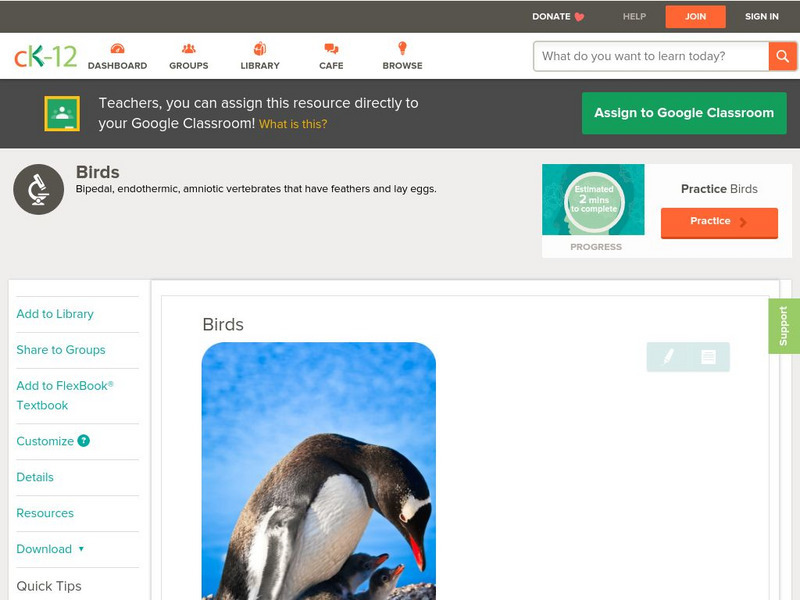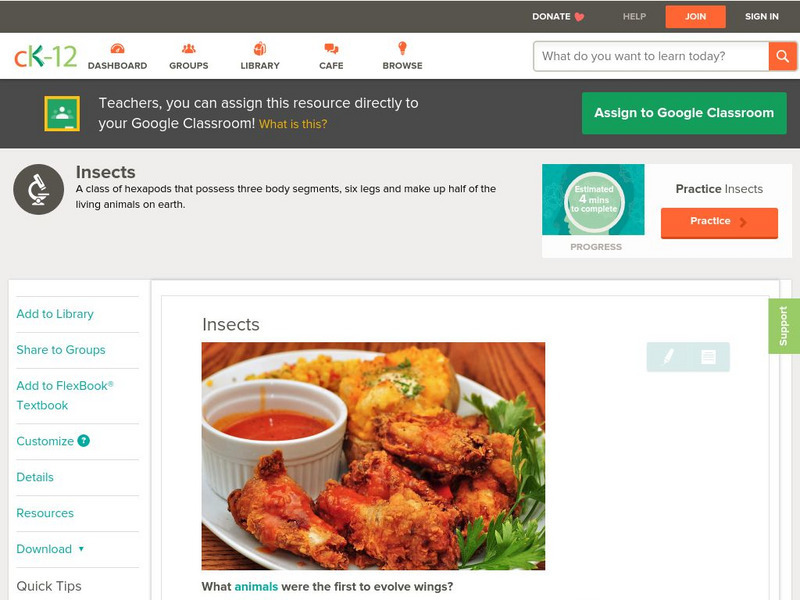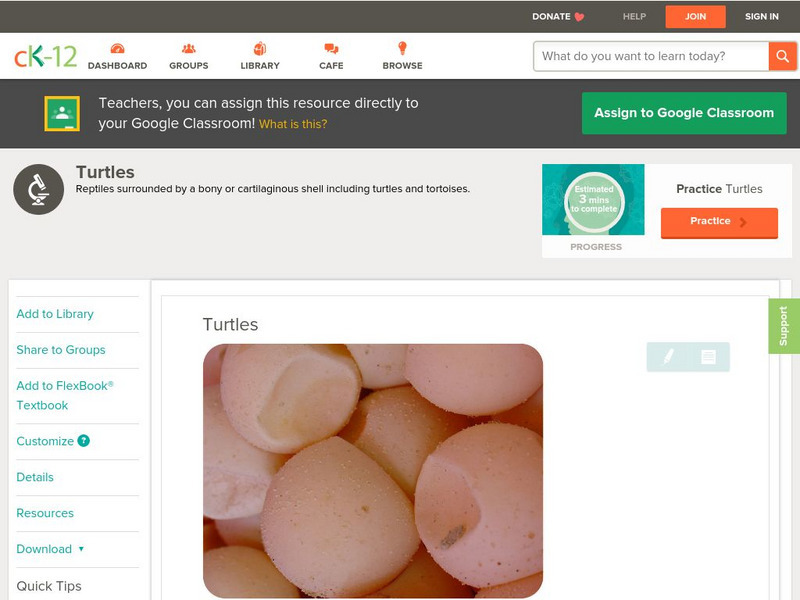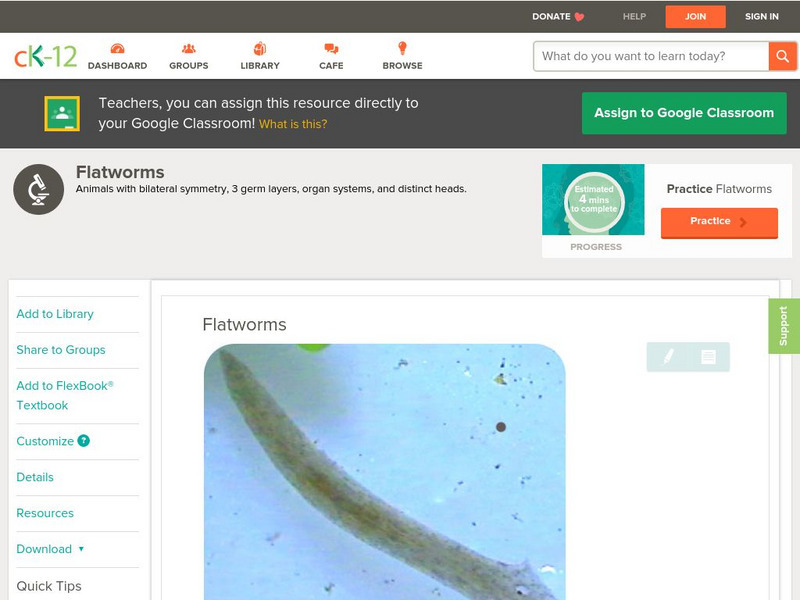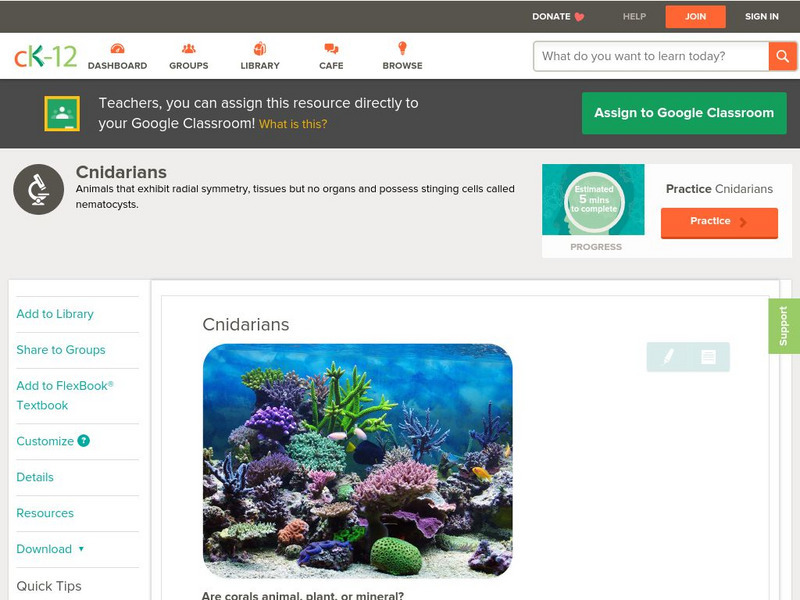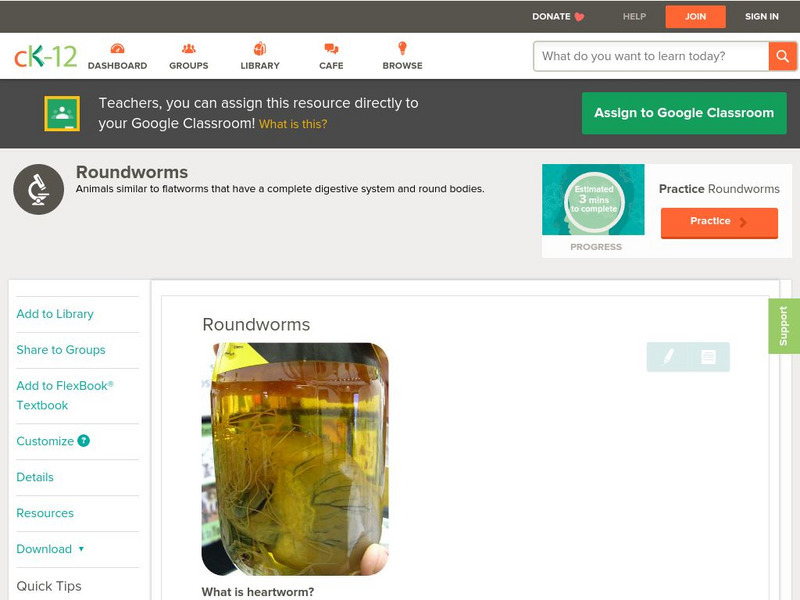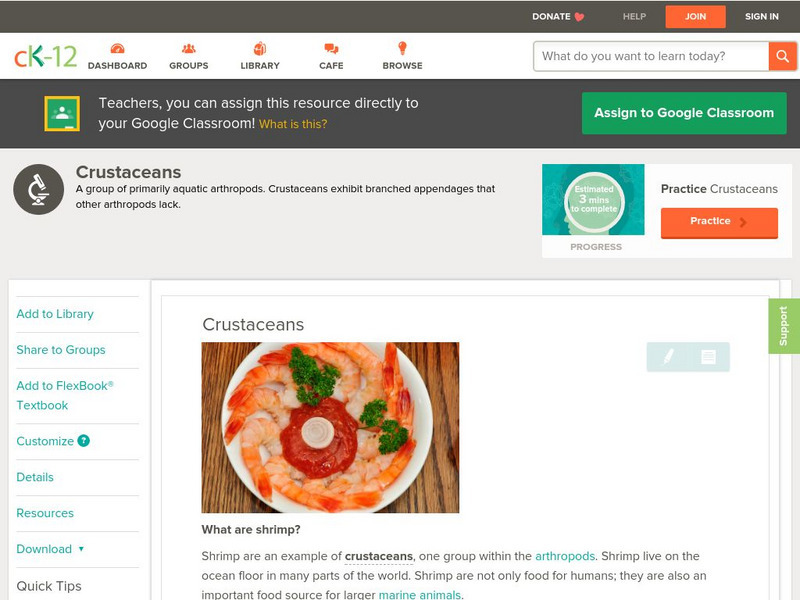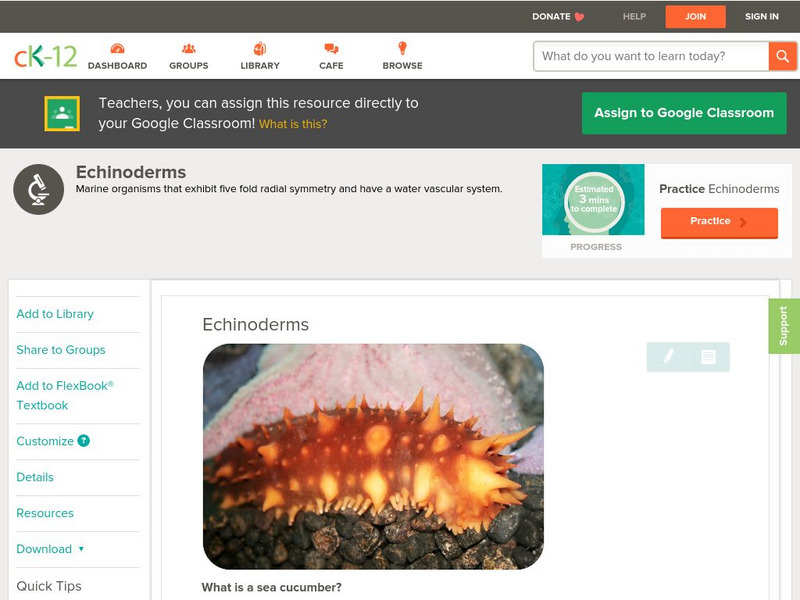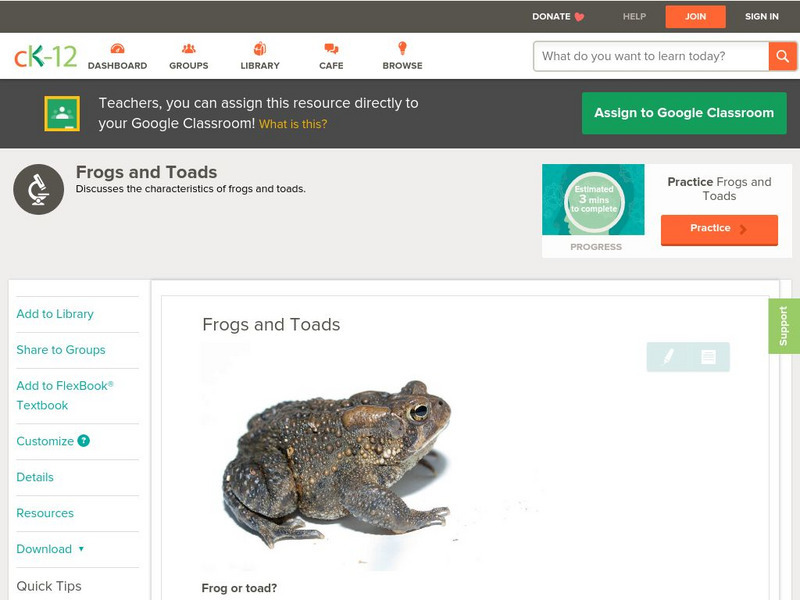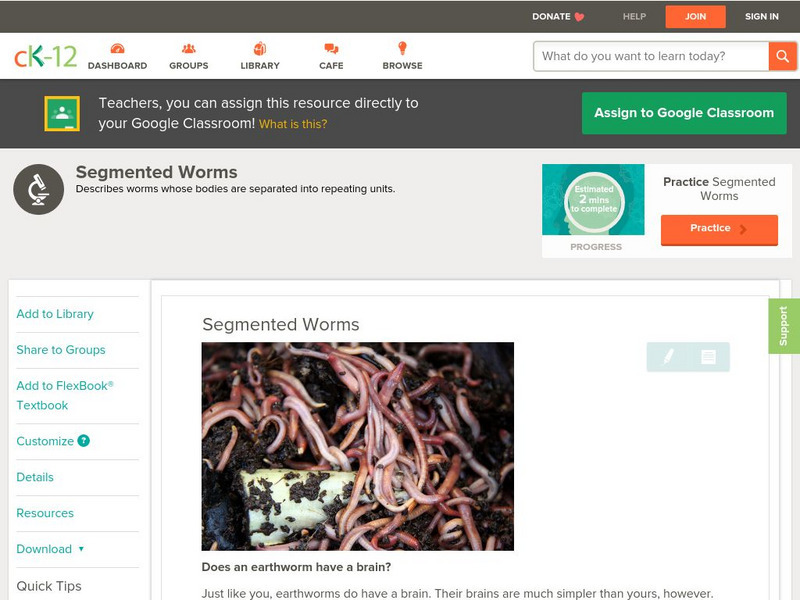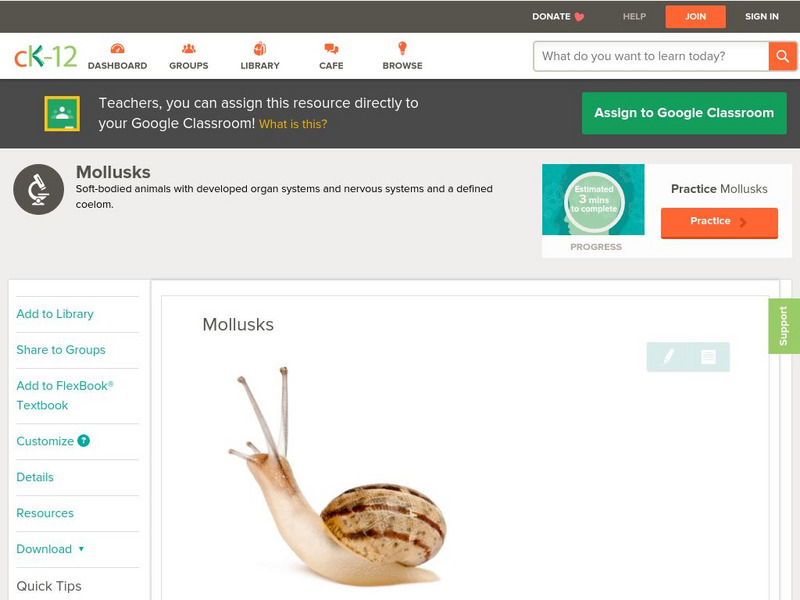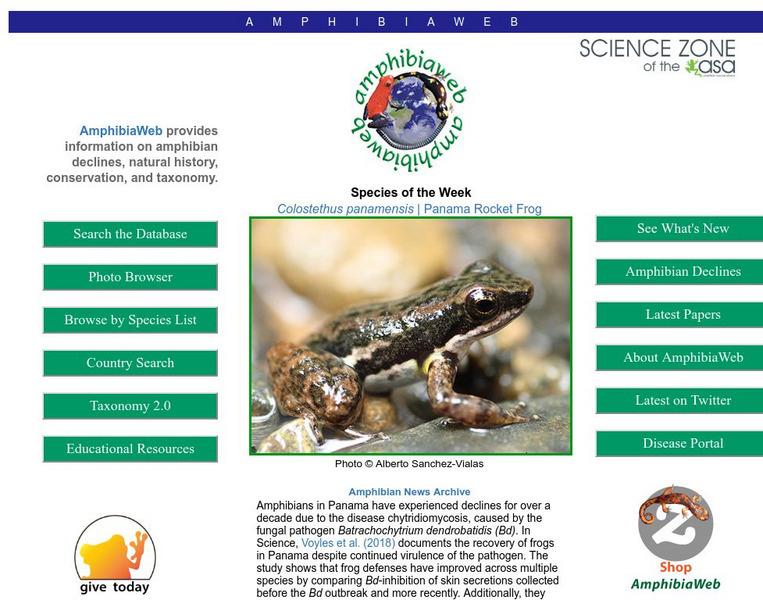Hi, what do you want to do?
CK-12 Foundation
Ck 12: Life Science: Importance of Arthropods
[Free Registration/Login may be required to access all resource tools.] Arthropods might seem a little scary, but they are actually performing important roles in the environment. Arthropods are important to the ecosystem and to humans in...
CK-12 Foundation
Ck 12: Life Science: Invertebrates
[Free Registration/Login may be required to access all resource tools.] Animals are also often identified as being either invertebrates or vertebrates. These are terms based on the skeletons of the animals. Vertebrates have a backbone...
CK-12 Foundation
Ck 12: Life Science: Amphibians
[Free Registration/Login may be required to access all resource tools.] Amphibians are a group of vertebrates that have adapted to live in both water and on land. Amphibian larvae are born and live in water, and they breathe using gills....
CK-12 Foundation
Ck 12: Life Science: Archaea
[Free Registration/Login may be required to access all resource tools.] For many years, archaea were classified as bacteria. Like the bacteria, archaea lacked a nucleus and membrane-bound organelles and, therefore, were prokaryotic...
CK-12 Foundation
Ck 12: Life Science: Primates
[Free Registration/Login may be required to access all resource tools.] If primates are mammals, what makes them seem so different from most mammals? Primates, including humans, have several unique features. Some adaptations give...
CK-12 Foundation
Ck 12: Life Science: Reptiles
[Free Registration/Login may be required to access all resource tools.] What reptiles can you name? Snakes, alligators, and crocodiles are all reptiles. Modern reptiles live on every continent except Antarctica. They range in size from...
CK-12 Foundation
Ck 12: Life Science: Fish
[Free Registration/Login may be required to access all resource tools.] What exactly is a fish? You probably think the answer is obvious. You may say that a fish is an animal that swims in the ocean or a lake, using fins. But not all...
CK-12 Foundation
Ck 12: Life Science: Birds
[Free Registration/Login may be required to access all resource tools.] There is an amazingly wide variety of birds. Birds are vertebrates. Almost all have forelimbs modified as wings, but not all birds can fly. Learn more about birds in...
CK-12 Foundation
Ck 12: Life Science: Fungi
[Free Registration/Login may be required to access all resource tools.] Ever notice blue-green mold growing on a loaf of bread? Do you like your pizza with mushrooms? Has a physician ever prescribed an antibiotic for you? Learn more...
CK-12 Foundation
Ck 12: Life Science: Insects
[Free Registration/Login may be required to access all resource tools.] Insects, with over a million described species, are the most diverse group of animals on Earth. They may be found in nearly all environments on the planet. No matter...
CK-12 Foundation
Ck 12: Life Science: Sponges
[Free Registration/Login may be required to access all resource tools.] Sponges are classified in the phylum Porifera, from the Latin words meaning "having pores." Sponges are sessile, meaning they cannot move, so they filter water...
CK-12 Foundation
Ck 12: Life Science: Turtles
[Free Registration/Login may be required to access all resource tools.] Turtles are reptiles in the order Testudines. Most turtle bodies are covered by a special shell developed from their ribs. About 300 species are alive today, and...
CK-12 Foundation
Ck 12: Life Science: Flatworms
[Free Registration/Login may be required to access all resource tools.] The word "worm" is not very scientific. But it is a word that informally describes animals (usually invertebrates) that have long bodies with no arms or legs. Worms...
CK-12 Foundation
Ck 12: Life Science: Alligators and Crocodiles
[Free Registration/Login may be required to access all resource tools.] Crocodilia, containing both alligators and crocodiles, is an order of large reptiles. Reptiles belonging to Crocodilia are the closest living relatives of birds....
CK-12 Foundation
Ck 12: Life Science: Cnidarians
[Free Registration/Login may be required to access all resource tools.] Cnidarians, in the phylum Cnidaria, include organisms such as the jellyfish and sea anemones. These animals are found in shallow ocean water. Learn more about...
CK-12 Foundation
Ck 12: Life Science: Roundworms
[Free Registration/Login may be required to access all resource tools.] The word "worm" is not very scientific. This informal term describes animals that have long bodies with no arms or legs. Worms with round, non-segmented bodies are...
CK-12 Foundation
Ck 12: Life Science: Crustaceans
[Free Registration/Login may be required to access all resource tools.] Crustaceans are a large group of arthropods, consisting of almost 52,000 species. The majority of crustaceans are aquatic. A few groups have adapted to living on...
CK-12 Foundation
Ck 12: Life Science: Echinoderms
[Free Registration/Login may be required to access all resource tools.] You're probably familiar with starfish and sand dollars. They are both echinoderms. Sea urchins and sea cucumbers are also echinoderms. What's similar between these...
CK-12 Foundation
Ck 12: Life Science: Frogs and Toads
[Free Registration/Login may be required to access all resource tools.] Frogs and toads are amphibians in the order Anura. In terms of classification, there is actually not a big difference between frogs and toads. Learn more about frogs...
CK-12 Foundation
Ck 12: Life Science: Segmented Worms
[Free Registration/Login may be required to access all resource tools.] When you think of worms, you probably picture earthworms. There are actually many types of worms, including flatworms, roundworms, and segmented worms. Earthworms...
CK-12 Foundation
Ck 12: Life Science: Mollusks
[Free Registration/Login may be required to access all resource tools.] Mollusks are invertebrates that usually have a hard shell, a mantle, and a radula. Learn more about mollusks in this learning module produced by CK-12.
Other
Miami University: Cellular Nature of Life?
Basic information about cells in an outline form. Gives good information in an abbreviated format.
University of California
Regents of the University of California: Amphibia Web
AmphibiaWeb, a site inspired by global amphibian declines, is an online system that allows free access to information on amphibian biology and conservation. This site is filled with amphibian facts, a glossary of terms, species numbers,...
University of Michigan
University of Michigan: Viruses
This resource offers an outline of basic virus characteristics, including the reproductive process for viruses.





